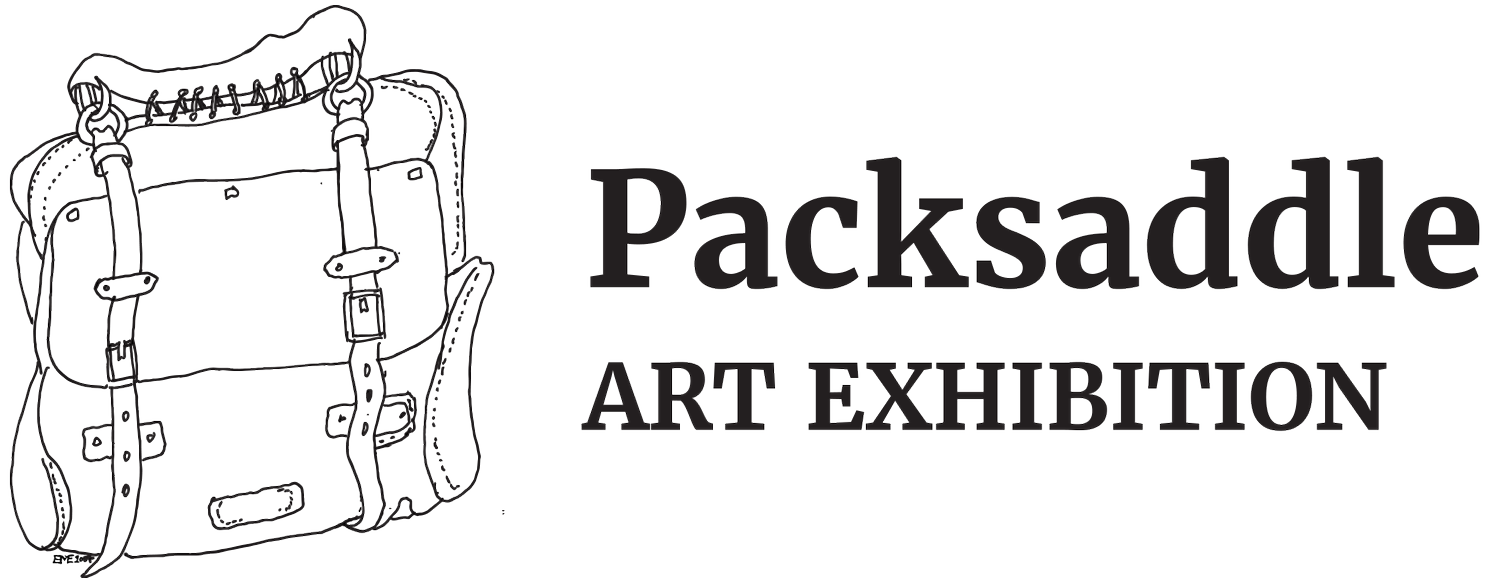
Entry form and information for artists and galleries
Exhibition opens 24 October, and runs until 9 November
Please note, artists must be invited by the Packsaddle fundraising committee to enter work.
If you wish to submit a work for consideration please forward at least two images to us via our contact page.
Submitting works
Artists must be invited to enter their work by the Packsaddle fundraising committee.
If you would like to submit works for consideration to exhibit at Packsaddle, please forward at least to images to us via our contact page.
Entry form for artists
If you have been invited to exhibit, please fill in the form below.
Each artist is limited to two artworks, which should not exceed 100 x 100 cm (including the frame), with artworks to be delivered in Sydney to the drop off point at the time stipulated in the conditions of entry or if delivering by hand to NERAM by 4pm Friday 10 October 2025.
We invite all exhibiting artists and participating galleries to visit NERAM during the exhibition. Please make yourself known to the Packsaddlers on duty and say hi!
Information for galleries
Thank you for agreeing to supply artworks to the 2025 Packsaddle Exhibition.
Please ensure each work is clearly labelled with the artist’s name, title of the work, media used, edition number if relevant, and retail selling price.
If you have any additional queries about our exhibition, please email Moira Lloyd.
Conditions of entry
Entry form
A completed entry form and a copy of your current CV/biographical details must be received by Friday 19 September 2025, via email or posted to: Packsaddle, c/- 237 Rusden Street, Armidale, NSW 2350
Delivery and transport of artworks
There are two Sydney drop-off points for art works, with specified drop-off times/dates, as below. The works will be picked up and delivered to Packsaddle at NERAM in Armidale, without cost to participating artists or galleries.
Meadowbank Campus of the Northern Sydney Institute of TAFE
See Street Gallery, Building Z, Meadowbank TAFE, NSW 2114.
Delivery times: Monday 22 September 2025 - Wednesday 24 September 2025 between 9.30am to 4pm, note drop off is closed between 12.30 to 1.30pm.
Contact Mel Beavis, Head Teacher via email or 0426 828 406, or Satendra Kumar, Ed. Support via email or 02 7920 6000.
OR
Artsite Contemporary
165-167 Salisbury Rd, (corner St Marys Street), Camperdown, NSW 2050
Delivery times: Monday 22 Tuesday September 2025 – Tuesday 23 September 2025, between 11am - 5pm.
Contact Artsite via email here.
Artwork details
All works must be clearly labelled with your name and contact number, title of work, the media, edition number if relevant, retail selling price and Sydney return drop-off location.
D-Hooks to be securely fitted to frame approximately 8cm from top.
It is your responsibility to ensure that all work is safely packed. Every care will be taken but Packsaddle assumes no responsibility for work damaged or lost in transit. Insurance is at your discretion.
NERAM
Artworks may be hand-delivered to NERAM to arrive no later than Friday 4pm 10 October, 2025, and must be clearly labelled as above, including: ATTN PACKSADDLE, C/- NERAM, Kentucky Street, Armidale NSW 2350. Tel: 02 6772 5255.
Please note that the Packsaddle Exhibition is professionally curated by NERAM staff. The decision to include or exclude art works is entirely at the discretion of the curator.
Post exhibition
Artists will be notified of work sold after the exhibition closes on 9 November, 2025. Payment for sold works will occur within 30 days of the close of the exhibition, once bank details have been received. Artists receive 60% of the retail price of all work sold; 40% commission is retained for the benefit of NERAM.
We will return any unsold work free of charge to Meadowbank TAFE or Artsite Contemporary.
We will advise you of the collection date and time stipulated by Meadowbank TAFE and Artsite Contemporary.
Please collect your work/s promptly, according to the times advised.
